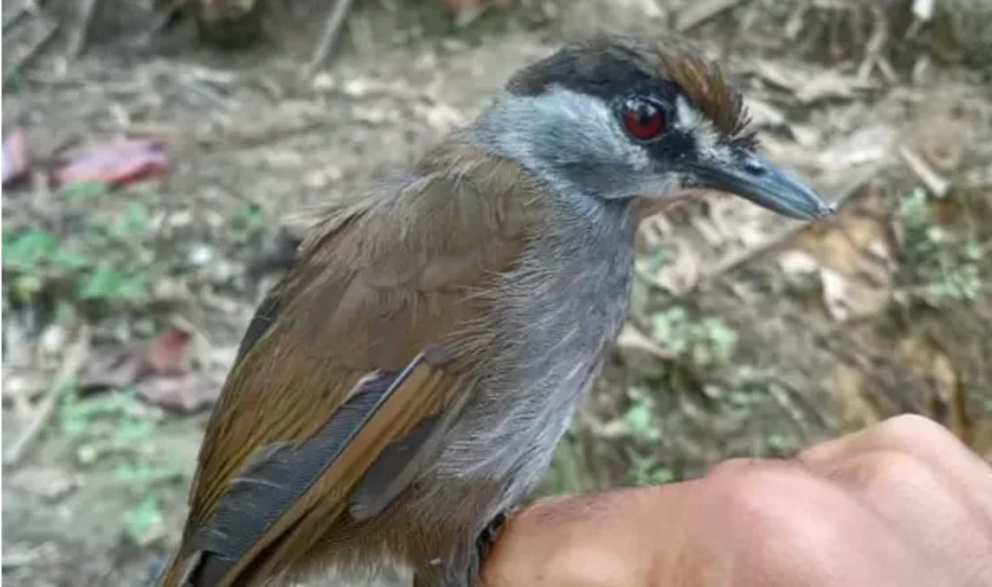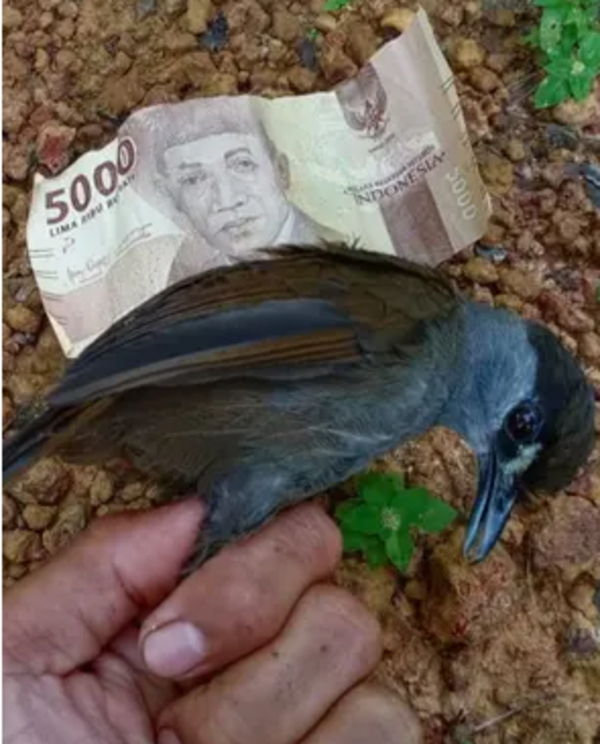Black-browed babbler found in Borneo 180 years after last sighting
Exclusive: Stuffed specimen was only proof of bird’s existence until discovery in rainforest last year
In the 1840s, a mystery bird was caught on an expedition to the East Indies. Charles Lucien Bonaparte, the nephew of Napoleon, described it to science and named it the black-browed babbler (Malacocincla perspicillata).

The black-browed babbler found in Indonesia’s South Kalimantan province last October. Photograph: M. Suranto
The species was never seen in the wild again, and a stuffed specimen featuring a bright yellow glass eye was the only proof of its existence. But now the black-browed babbler has been rediscovered in the rainforests of Borneo.
Two local men, Muhammad Suranto and Muhammad Rizky Fauzan, chanced upon a bird they did not recognise in Indonesia’s South Kalimantan province in October last year and managed to catch it. They photographed the bird, released it, and reported their find to birdwatching groups.
Experts from the region confirmed the bird’s identity, noting its strong bill, chocolate colouring and distinctive black eye-stripe. Unlike the taxidermied specimen, the live bird’s iris was a striking maroon colour.

The bird has a chocolate colouring and distinctive black eye-stripe. Photograph: M. Suranto
“It feels surreal to know that we have found a species of bird presumed by experts to be extinct,” said Rizky Fauzan. “We didn’t expect it to be that special at all – we thought it was just another bird that we simply have never seen before.”
The uncertainty over the bird’s existence was compounded by confusion over when and where the first specimen was collected, with ornithologists assuming that the German naturalist Carl Schwaner discovered it in Java. In 1895, the Swiss ornithologist Johann Büttikofer pointed out that Schwaner was in Borneo at the time the bird was collected.
Panji Gusti Akbar, of the Indonesian ornithological group Birdpacker, who was the lead author of a paper detailing the bird’s rediscovery, said: “This sensational finding confirms that the black-browed babbler comes from south-eastern Borneo, ending the century-long confusion about its origins.
“We now also know what the black-browed babbler really looks like. The photographed bird showed several differences from the only known specimen, specifically the colour of the iris, bill and leg. These three parts of a bird’s body are known to lose their tint and are often artificially coloured during the taxidermy process.”
More than 1,700 bird species live across the archipelago of Indonesia, with many remote islands not well surveyed by scientists despite the region’s riches inspiring Alfred Russel Wallace’s theories of evolution 170 years ago. Five new songbird species and five new subspecies were identified last year on the Indonesian islands of Taliabu, Peleng and Batudaka.
Ding Li Yong, of BirdLife International, a co-author of the paper published in the Oriental Bird Club’s journal Birding Asia, said: “It’s sobering to think that when the black-browed babbler was last seen, Charles Darwin’s Origin of Species hadn’t even been published and the now extinct passenger pigeon was still among the world’s commonest birds.
“Who knows what other riches lie deep within Borneo’s fabled rainforests, especially in the Indonesian part of the island?”
The black-browed babbler has survived despite massive deforestation in lowland Borneo. “There is therefore a very high possibility of it being severely threatened by habitat loss,” said Akbar.
Conservationists plan to visit the site where the bird was photographed as soon as coronavirus restrictions allow.
